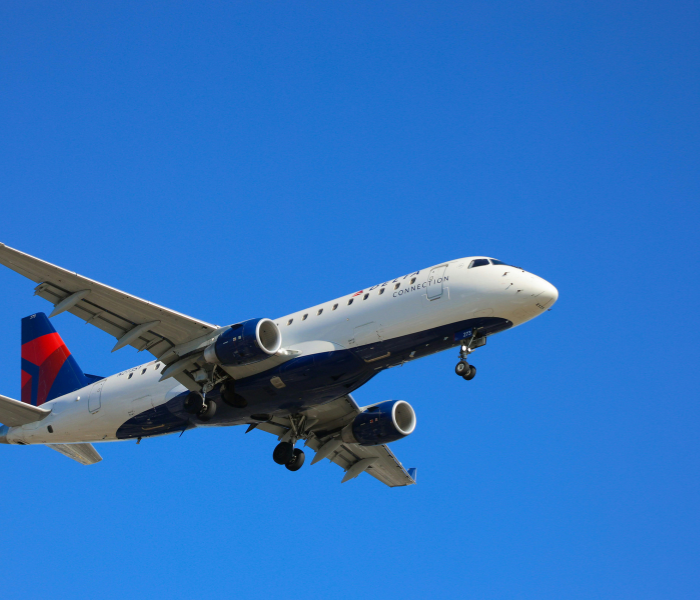Introduction: The Unplanned Detour Over the Pacific
On May 28, 2025, Delta Flight DL275—a routine trans-Pacific service from Detroit Metropolitan Airport (DTW) to Tokyo Haneda (HND)—became an aviation case study. While cruising at 38,000 feet over the Bering Sea, the Airbus A350-900 (registration N508DN) suffered a critical failure in its Rolls-Royce Trent XWB engine’s anti-ice system. Within minutes of detecting the anomaly, the crew diverted the aircraft to Los Angeles International Airport (LAX), prioritizing safety over schedule in a decision costing millions. This incident spotlights aviation’s delicate balance between human expertise, mechanical complexity, and emerging predictive technologies.
Also read: United Airlines Flight UA770 Emergency Diversion
Incident Timeline – From Routine Flight to Emergency Diversion
The Critical Sequence of Events (Pacific Daylight Time):
- Delayed departure from Detroit due to late inbound aircraft
- Mid-flight: First “ICE PROT DEGRADED” alert triggers cockpit warnings at 38,000 ft, southwest of Anchorage
- Captain declares emergency (“MAYDAY MAYDAY DL275”) after confirming system failure
- Air Traffic Control approves LAX diversion; aircraft initiates descent
- Safe landing on LAX’s Runway 06R after more than 12 hours of flight time
Table: Systems Monitoring Timeline During Crisis
| Time (UTC) | System Status | Crew Action |
|---|---|---|
| 00:34 | Anti-ice flow rate drops | Initiate diagnostics |
| 00:42 | Complete Engine 2 anti-ice failure | Begin emergency descent |
| 00:45 | ECAM alerts confirm failure | Declare MAYDAY, request LAX diversion |
| 00:52 | Fuel calculations updated | Confirm LAX as diversion point |
Technical Breakdown – The Anti-Ice System Failure
Why Ice Protection Is Non-Negotiable at 38,000 Feet
The Trent XWB’s anti-ice system uses hot bleed air from engine compressors to prevent ice accumulation on fan blades, inlets, and sensors. At cruising altitudes, temperatures can reach -50°C, creating high-risk icing conditions. Failure invites:
- Engine flameout from disrupted airflow
- Thrust loss due to ice-induced aerodynamic changes
- Sensor malfunctions affecting flight controls
Sensor Data Revealed Pre-Flight Vulnerabilities:
- Bleed air pressure: below normal
- Valve response time: slower than baseline
- Temperature differentials: lower than operational thresholds
Despite these anomalies, legacy monitoring systems didn’t flag the degradation as critical pre-departure.
Why LAX? The Strategic Diversion Decision
Pilots chose LAX over closer options like Anchorage or Seattle due to four critical advantages:
- Maintenance Capabilities: As a Delta TechOps hub, LAX houses certified A350 mechanics and Rolls-Royce technical crews available 24/7.
- Infrastructure: Runways capable of handling fuel-heavy wide-bodies; de-icing equipment on standby.
- Passenger Logistics: Customs facilities for international re-routing; extensive Delta flight network for rebooking.
- Regulatory Compliance: FAA mandates diversions to airports with resources matching the aircraft’s needs.
“Delta 275 requesting Los Angeles. We need Rolls-Royce maintenance capability.” — Pilot communication with ATC
Operational & Financial Impact – The Domino Effect
Cost Breakdown of the Diversion:
- Direct Operational: Fuel, LAX landing fees, maintenance, crew overtime
- Passenger Care: Hotels, meals, rebooking
- Revenue Loss: Cancelled Tokyo leg and network disruption
- Brand Damage: Potential future revenue loss per passenger
Fleet Downtime:
- Aircraft grounded for inspections and repairs
- Passengers delayed en route to Tokyo
- Multiple related Delta diversions on the same day stressing operational reserves
Passenger Experience – Calm Above Chaos
Despite the high-stakes scenario, crew professionalism minimized panic:
- Clear announcements explained the precautionary diversion
- Flight attendants distributed water and maintained cabin calm
- Post-landing support: Hotels near LAX, meal vouchers, expedited rebooking via Delta app
Social media reactions highlighted #DL275 crew praise, though business travelers faced significant connection disruptions. EU261/2004 compensation claims were possible for affected passengers.
The AI Prevention Opportunity – Predictive Maintenance
This diversion exemplifies reactive aviation safety’s limitations. Modern aircraft like the A350 generate terabytes of data per flight from thousands of sensors. AI-driven predictive maintenance could have averted the crisis:
- Algorithmic analysis of valve response times, temperature trends, and pressure variations
- High accuracy in forecasting Trent XWB failures hours before departure
- Prevention cost far lower than the actual incident loss
Airlines Leading in Predictive Tech:
- Lufthansa: AVIATAR platform processes billions of data points daily
- United: Significant reduction in unplanned maintenance via AI
- Emirates: Extended engine lifespan using ML forecasts
Industry-Wide Lessons – Training, Tech, and Policy
Key Takeaways from DL275:
- Crew Training Gap: Delays in declaring emergencies can add major costs; simulators now emphasize faster response times.
- Regulatory Barriers: FAA requires extensive validation for AI tools, slowing adoption. Industry groups seek harmonized global certification.
- Infrastructure Value: Hub airports like LAX are critical safety nets for oceanic flights.
- Passenger Preparedness: Travelers should carry essential items like medications and chargers in their carry-ons for unexpected diversions.
Conclusion:
The DL275 diversion underscores aviation’s safety-first ethos—choosing ground safety over airborne risk. Yet its high cost highlights an industry at a crossroads. As quantum computing, 5G connectivity, and blockchain maintenance logs converge, airlines investing in predictive AI will dominate in operational resilience, cost efficiency, and passenger trust. For Delta and global aviation, this incident isn’t just a diversion record; it’s a blueprint for a future of failure-proof skies.

